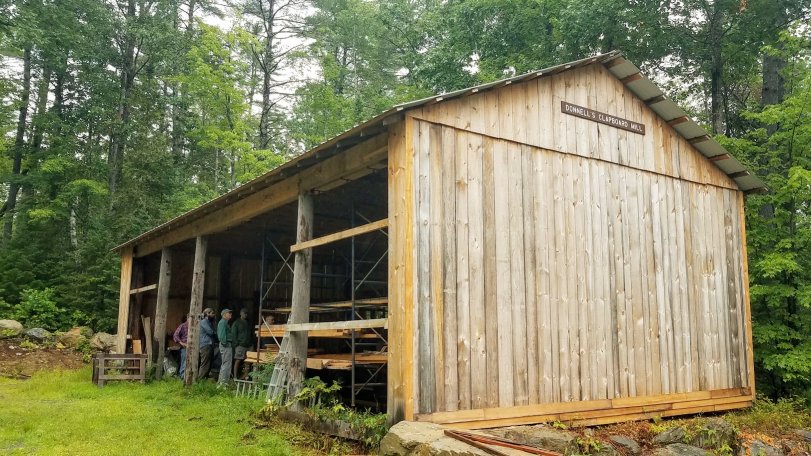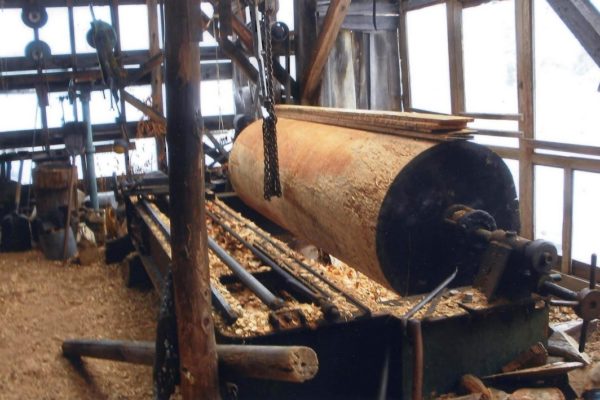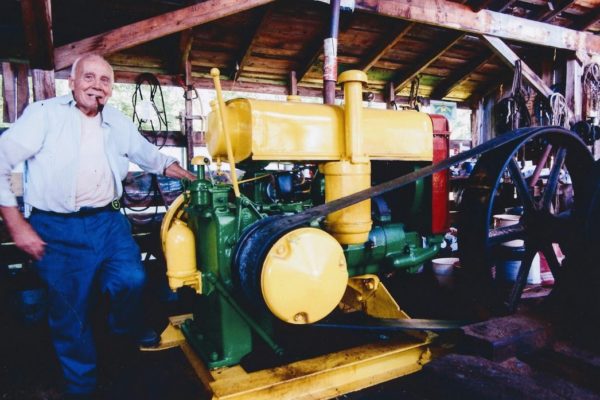
DONNELL MILL RESTORATION PROJECT
Volunteer crews work year-round at the Maine Forest and Logging Museum, renovating aging buildings and restoring artifacts. The list of projects is long, but the Donnell Clapboard Mill project is finally at the top of the ‘big projects’ list.
Bill Donnell operated his clapboard mill in Sedgewick, Maine for many years. He was a familiar sight at the Blue Hill Fair, talking about clapboards and having a pipe. His pipe was a part of him! When he passed away, his sister donated the mill to the Museum, where it sat under a tarp for about 10 years. It is ready to have a building around it!
Clapboards were made by hand prior to 1800 with a process called riving. The 4’ long clapboards could last for centuries due to the way the grain of the wood lay. The age of mechanization came with two competing ideas. Some early saws were developed that made flat-grain, or resawn, boards into the tapered clapboards, but the grain was wavy. Modern clapboards are still made that way, but they have a much shorter life span than riven clapboards.

The other type of development was a quarter-sawn, or rift, clapboard. The mills making those turned the log into a giant dowel, which was then cut into pie shaped wedges. The grain ends up straight, like the riven clapboards, and Bill Donnell’s mill is the only known saw to cut 8’ clapboards. They were made to last!
We have volunteers ready to work on the mill building and getting all the equipment set up, including ‘John’, the 1939 John Deere make-and-break engine that powers the mill. They built to last–the clapboards had the top surface and edges dressed by an 1889 Lane clapboard planer.
The Maine Forest and Logging Museum is a living history museum. If we have it, we hope to have it running! Become a volunteer to help with the work or help by funding the volunteer projects to do just that. Contact us or Donate.
